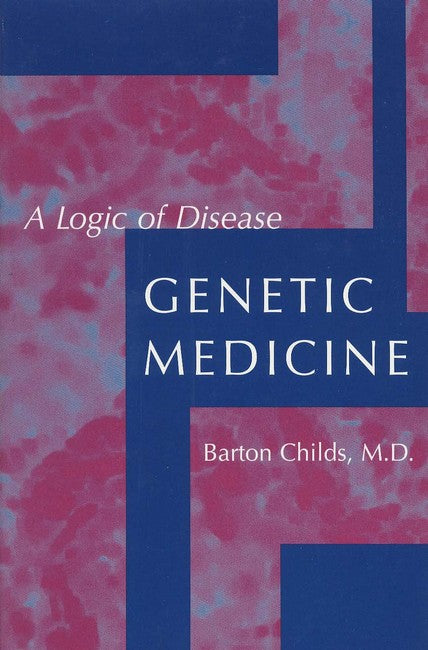Contents:1. IntroductionI. MEDICAL THINKING
2. Inborn Errors and Chemical Individuality
3. The Transition from Oslerian to Garrodian Medicine
4. Individuality and Causes
5. Definitions of DiseaseII. A LOGIC OF DISEASE
6. Biology and Medicine: Contrasts and Convergences
7. A SynthesisIII. SPECIES IDENTITY
8. Lessons from PhylogenyIV. ADAPTIVE FLEXIBILITY: HOMEOSTASIS AND DEVELOPMENT
9. Physiological Homeostasis: The Homeostasis of the Moment
10. Genetic Homeostasis: The Past
11. Developmental Homeostasis: The Lifetime
12. Sociocultural Homeostasis
13. Homeostatic InteractionsV. DESCENT WITH MODIFICATION: GENETIC VARIATION
14. What is a Gene?
15. The Paths of Gene Action
16. Whatever Is, Is Variable
17. The Semantics of Genetics
18. Classification of DiseaseVI. REPRODUCTION, FREQUENCY, AND CONTINUITY
19. The Diploid State
20. Gene Frequency
21. Heterogeneity
22. Unity and Continuity of Disease
23. Heritability
24. InfectionsVII. AN ANALYSIS OF DISEASE IN THREE TIME FRAMES
25. The Moment: Type I Diabetes
26. The Lifetime
27. Biological and Social History, and a Vision of Disease in Three Time FramesVIII. THE LOGIC AND MODERN MEDICINE
28. The Human Genome Project
29. The Medical-Genetic Synthesis and Society
30. A Basis for Medical Education
Request Academic Copy
Please copy the ISBN for submitting review copy form
Description
""This book is highly recommended for a wide variety of audiences in addition to physicians and medical students: ethicists, anthropologists, social workers, nurses, and other members of the health profession. Hospital administrators, insurance personnel, and lawyers could also benefit, particularly in this day of managed care. Members of curriculum committees of medical schools and public health schools could also benefit. Fortunately, some of Childs's concepts are being applied to medical teaching already, but I know of no better synthesis in one book.""

